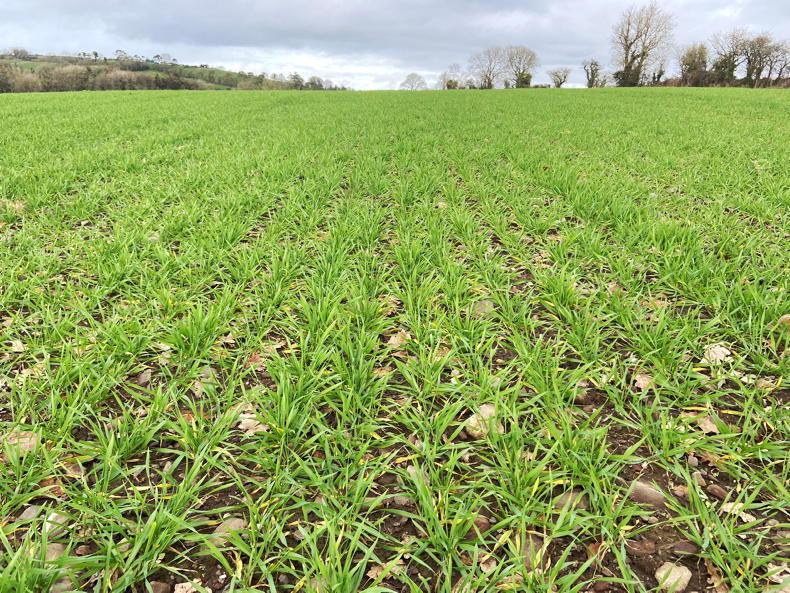Padraig Connery from Villierstown, Co Waterford, has 55% of his tillage area in premium crops this year and plans to increase this to 62% next year.
The total area on the farm in tillage is 345 acres, with 100 acres of winter barley (25 acres of which is premium for seed), 70 acres of winter oats for Flahavans, 95 acres of spring malting barley and 55 acres of winter wheat for animal feed.
There is also 25 acres of spring beans, which will allow for seed winter barley next year.
Why grow premium crops?
There is a big financial incentive to growing premium crops.
In 2022, Dairygold harvest prices for feed barley stood at €302/t, while malting barley was up at €385/t.
Tirlán feed barley prices were €310/t, while, again, malting barley was higher at €385/t.
The premium for seed barley is traditionally €30/t. The Flahavans base price was approximately €322/t including a transport allowance, plus moisture and KPH bonuses.
However, while there is a clear financial incentive to growing such crops, they can also present challenges for Pádraig in terms of crop husbandry.

Integral seed winter barley.
For example, for malting barley, protein levels over a certain percentage will result in the crop bring rejected, so he has to keep an eye on his nitrogen and organic fertiliser rates.
For seed barley, weeds, especially wild oats, cannot be present and the crop is inspected by Department officials pre-harvest. The combine must also be fully blown out and cleaned before harvest.
For Flahavans, as is the case for most premium crops, a minimum KPH must be reached, as well as maximum moisture specifications for the grain to be accepted.
Farmers must also be a member of IGAS and grow specified varieties. In addition to this, farmers cannot desiccate premium grain crops pre-harvest.
However, for Pádraig, these measures are worth it. “If I am growing the crop, why not do it to the highest standard possible and add as much value as I can inside the farm gate.”
Padraig Connery from Villierstown, Co Waterford, has 55% of his tillage area in premium crops this year and plans to increase this to 62% next year.
The total area on the farm in tillage is 345 acres, with 100 acres of winter barley (25 acres of which is premium for seed), 70 acres of winter oats for Flahavans, 95 acres of spring malting barley and 55 acres of winter wheat for animal feed.
There is also 25 acres of spring beans, which will allow for seed winter barley next year.
Why grow premium crops?
There is a big financial incentive to growing premium crops.
In 2022, Dairygold harvest prices for feed barley stood at €302/t, while malting barley was up at €385/t.
Tirlán feed barley prices were €310/t, while, again, malting barley was higher at €385/t.
The premium for seed barley is traditionally €30/t. The Flahavans base price was approximately €322/t including a transport allowance, plus moisture and KPH bonuses.
However, while there is a clear financial incentive to growing such crops, they can also present challenges for Pádraig in terms of crop husbandry.

Integral seed winter barley.
For example, for malting barley, protein levels over a certain percentage will result in the crop bring rejected, so he has to keep an eye on his nitrogen and organic fertiliser rates.
For seed barley, weeds, especially wild oats, cannot be present and the crop is inspected by Department officials pre-harvest. The combine must also be fully blown out and cleaned before harvest.
For Flahavans, as is the case for most premium crops, a minimum KPH must be reached, as well as maximum moisture specifications for the grain to be accepted.
Farmers must also be a member of IGAS and grow specified varieties. In addition to this, farmers cannot desiccate premium grain crops pre-harvest.
However, for Pádraig, these measures are worth it. “If I am growing the crop, why not do it to the highest standard possible and add as much value as I can inside the farm gate.”







 This is a subscriber-only article
This is a subscriber-only article











SHARING OPTIONS: